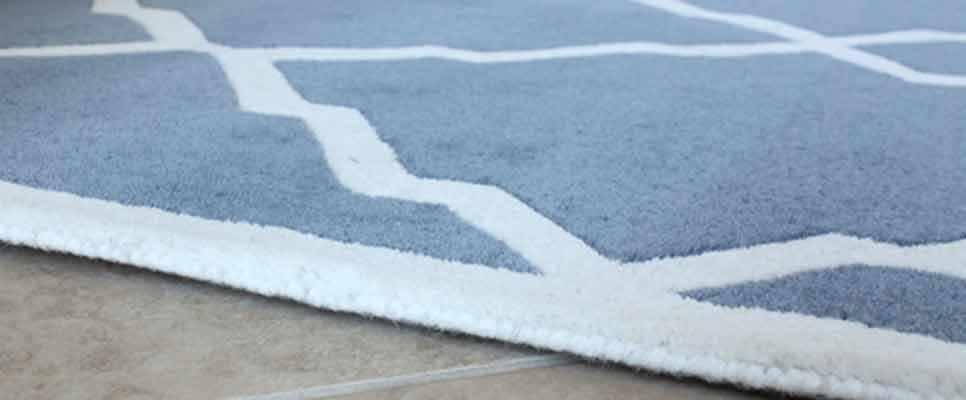Carpets are a cozy and beautiful addition to our homes. They come in a variety of styles, colors, and materials, making it easy to find the perfect one to match your decor. However, if you’ve ever noticed loose fibers, fluff, or little “pills” on your carpet’s surface, you may wonder why some carpets shed and fuzz. In this in-depth blog post, we’ll explore the reasons behind this phenomenon and provide you with easy-to-understand explanations backed by credible sources.

Understanding Carpet Shedding and Fuzz
Carpet shedding and fuzz are common issues that occur in most types of carpets. Shedding refers to the release of loose fibers from the carpet’s surface, which can accumulate as small, fuzzy balls, commonly known as fuzz. These loose fibers can be made of various materials, such as wool, synthetic fibers, or a blend of both. Shedding and fuzzing are natural processes that can be attributed to several factors.
Fiber Type and Quality
The type and quality of carpet fibers play a significant role in shedding and fuzzing. Carpets made from natural fibers, such as wool, tend to shed more than those made from synthetic materials. Wool fibers have tiny scales that can interlock and cause friction, leading to shedding. Synthetic fibers, on the other hand, are generally more resilient and less prone to shedding.
High-quality carpets made from premium materials typically shed less because they undergo more rigorous manufacturing processes to reduce loose fibers.
Manufacturing Process
The manufacturing process of carpets influences shedding and fuzzing. During the production of carpets, fibers are spun, twisted, and woven into the carpet backing. The quality of the manufacturing process, including the tightness of the yarn twist, affects the carpet’s tendency to shed. Well-constructed carpets with higher yarn twist levels are less likely to shed and fuzz.
New Carpet Installation
When you first install a new carpet, it’s common for it to shed and fuzz more than older carpets. This is because some loose fibers remain from the manufacturing process and haven’t yet been vacuumed or walked on. Over time, regular vacuuming and foot traffic help remove these loose fibers, reducing shedding.
Foot Traffic and Use
As mentioned, foot traffic can help to reduce shedding in carpets. When you walk on a carpet, you compress the fibers and encourage them to settle into their proper position. Over time, the fibers become less prone to shedding and fuzzing.
Environmental Factors
Environmental factors also play a role in shedding and fuzzing. Dry climates with low humidity can cause carpet fibers to become more brittle and prone to shedding. Conversely, high humidity can make fibers more elastic and less likely to shed. Maintaining proper indoor humidity levels can help reduce shedding.
Cleaning and Maintenance
Proper cleaning and maintenance can significantly impact shedding and fuzzing. Regular vacuuming is essential to remove loose fibers and prevent them from accumulating on the surface. Be sure to use a vacuum with a beater bar or brush to agitate the fibers and promote their alignment. Avoid using vacuums with high suction power, which can pull out more fibers.
Causes of Fuzz in Carpets
Fuzz, those little balls of fibers that form on the carpet’s surface, are typically the result of shedding fibers tangling together and forming tiny clumps. Fuzz can be caused by the factors mentioned above, and there are a few additional reasons for its formation:
Poor-Quality Carpet
Low-quality carpets, especially those with loose or poorly twisted fibers, are more prone to forming fuzz. It’s important to invest in a high-quality carpet to minimize this issue.
Aggressive Cleaning Methods
Excessive use of aggressive cleaning methods like harsh brushes or abrasive cleaners can lead to damage and fuzzing on the carpet’s surface. Always follow the manufacturer’s recommended cleaning guidelines to prevent fuzz from forming.
Pets and Sharp Objects
Pets with sharp claws or objects with sharp edges can contribute to fuzz formation when they snag the carpet fibers. Be cautious when allowing pets on your carpet, and avoid placing sharp objects directly on the carpet.
Also Read: How to Repair Carpet Damage by Pets
Conclusion
In summary, shedding and fuzzing in carpets are natural processes influenced by factors like fiber type, manufacturing quality, installation, foot traffic, and environmental conditions. Shedding is more common in wool or natural fiber carpets, while synthetic fibers are less prone to shedding. Quality and proper maintenance are key factors in minimizing shedding and fuzzing.
To maintain your carpet and keep shedding and fuzzing to a minimum, follow these tips:
- Invest in a high-quality carpet with tight yarn twists.
- Allow new carpets to settle with time, regular vacuuming, and foot traffic.
- Maintain proper indoor humidity levels.
- Regularly vacuum your carpet with a suitable vacuum cleaner.
- Follow the manufacturer’s cleaning guidelines and avoid aggressive cleaning methods.
- Be cautious with pets and sharp objects around the carpet.
Understanding the reasons behind shedding and fuzzing in carpets can help you better care for and enjoy your beautiful floor coverings. Remember that some shedding is natural and to be expected, but with proper care, you can keep your carpet looking its best for years to come.
Also Read: How to Fit Carpet Gripper
Published on: October 30, 2023
Last updated on: November 2, 2023
